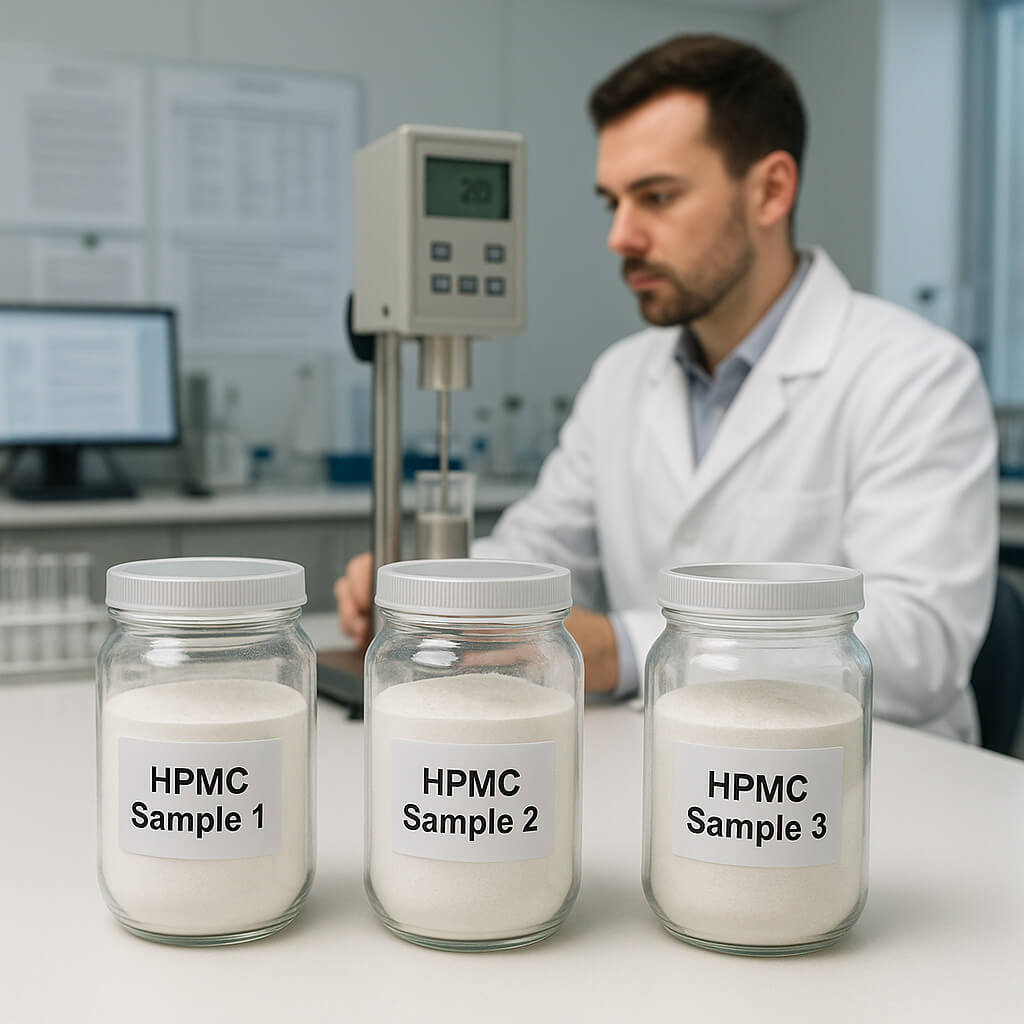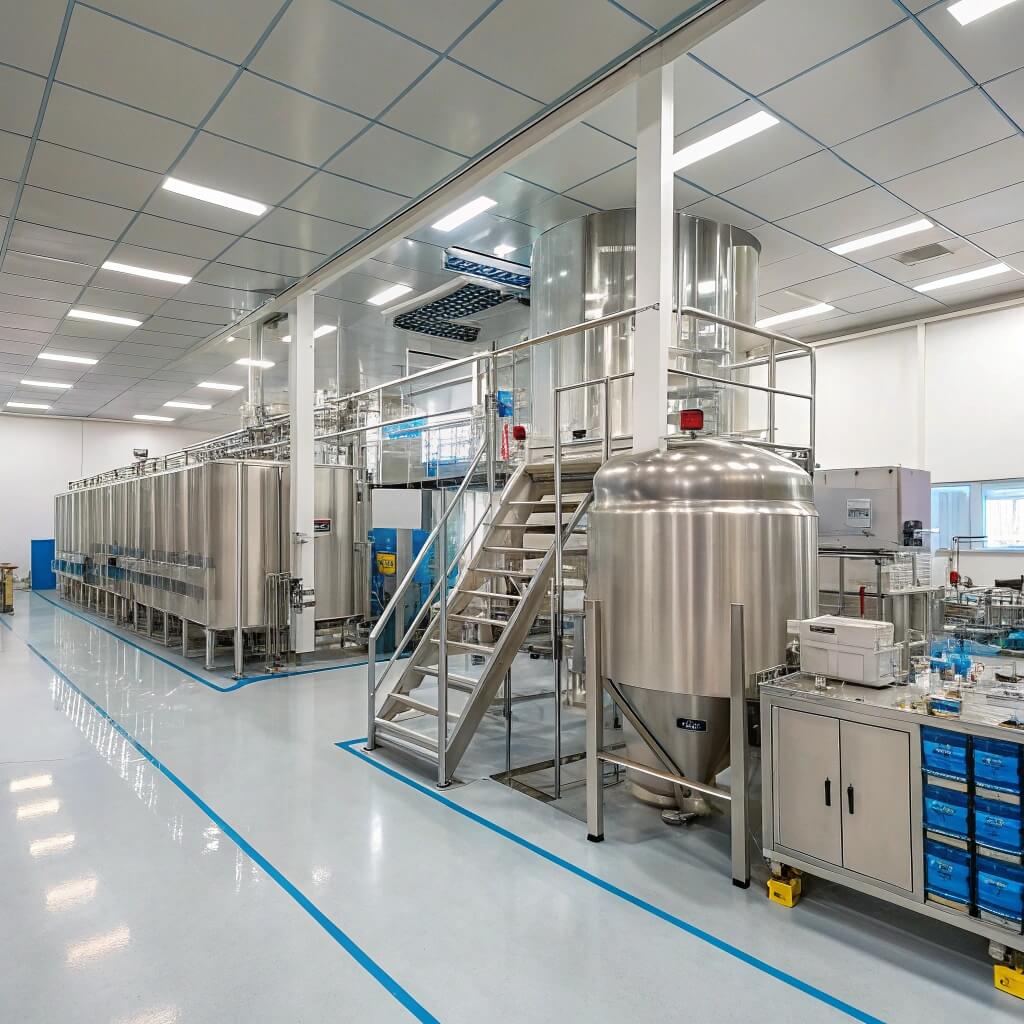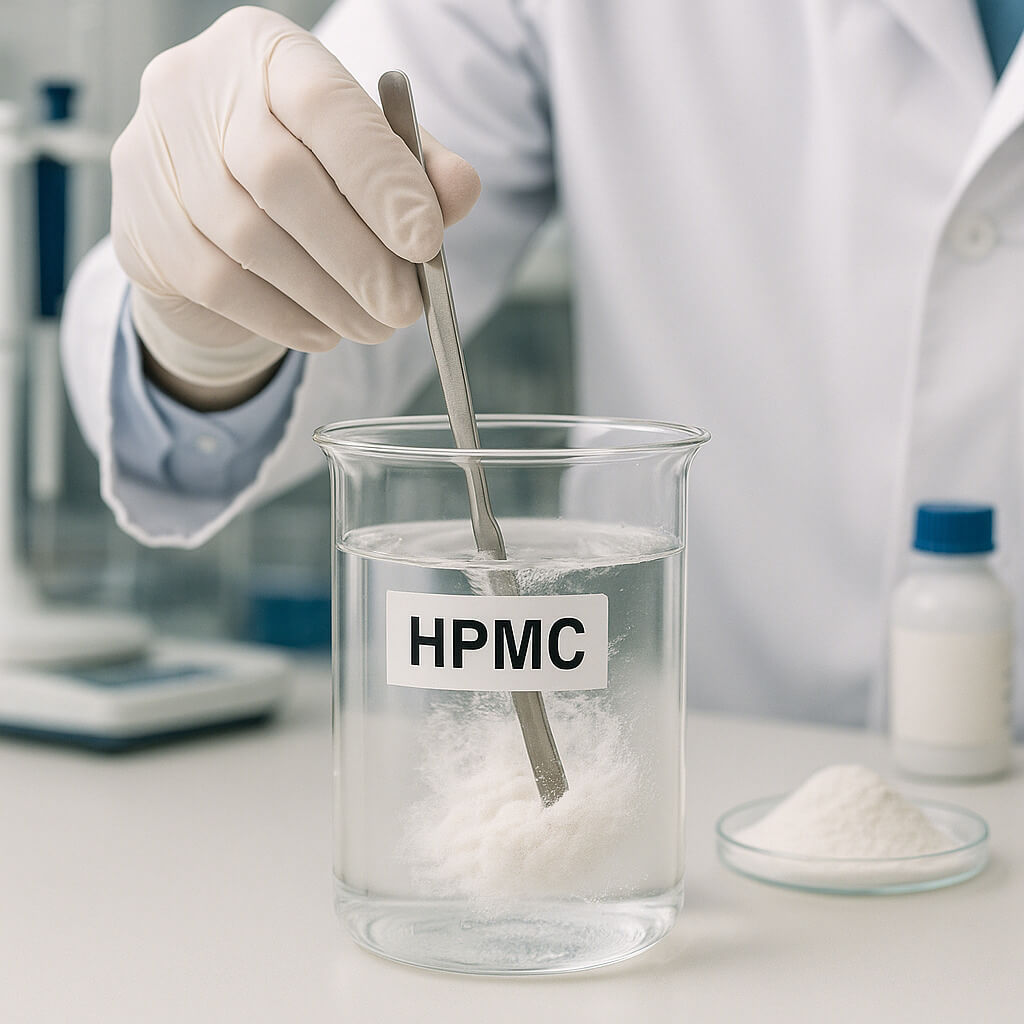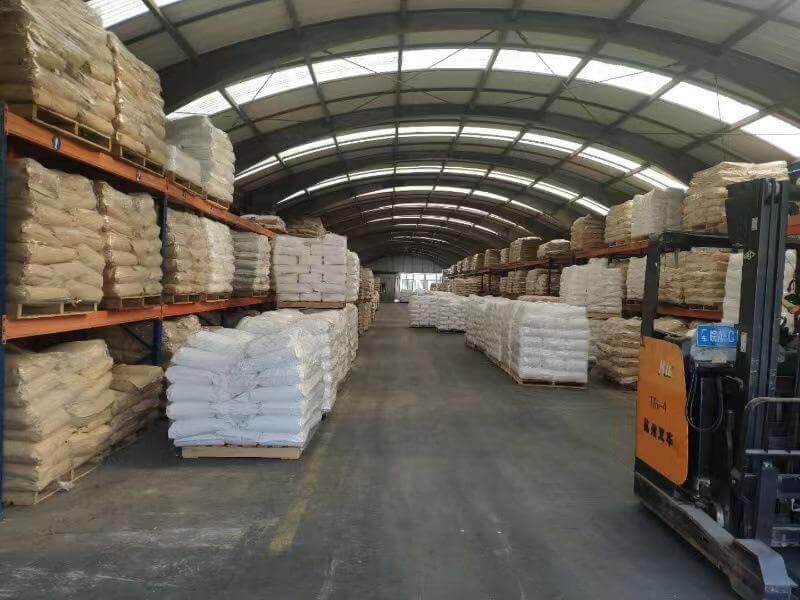Navigating the complex market for Hydroxypropyl Methylcellulose (HPMC) presents significant challenges for B2B buyers. You face the critical task of securing high-quality materials that meet stringent industry standards, often with tight deadlines and budget constraints. Poor supplier choices lead to inconsistent product quality, production delays, and increased operational costs. This directly impacts your bottom line and market reputation. This article offers clear guidance to help you make informed decisions. It provides a strategic framework for evaluating HPMC suppliers. This guide will cover HPMC fundamentals, supplier selection criteria, quality standards, manufacturing impacts, supply chain management, sustainability, technical support, cost-effectiveness, and future trends.
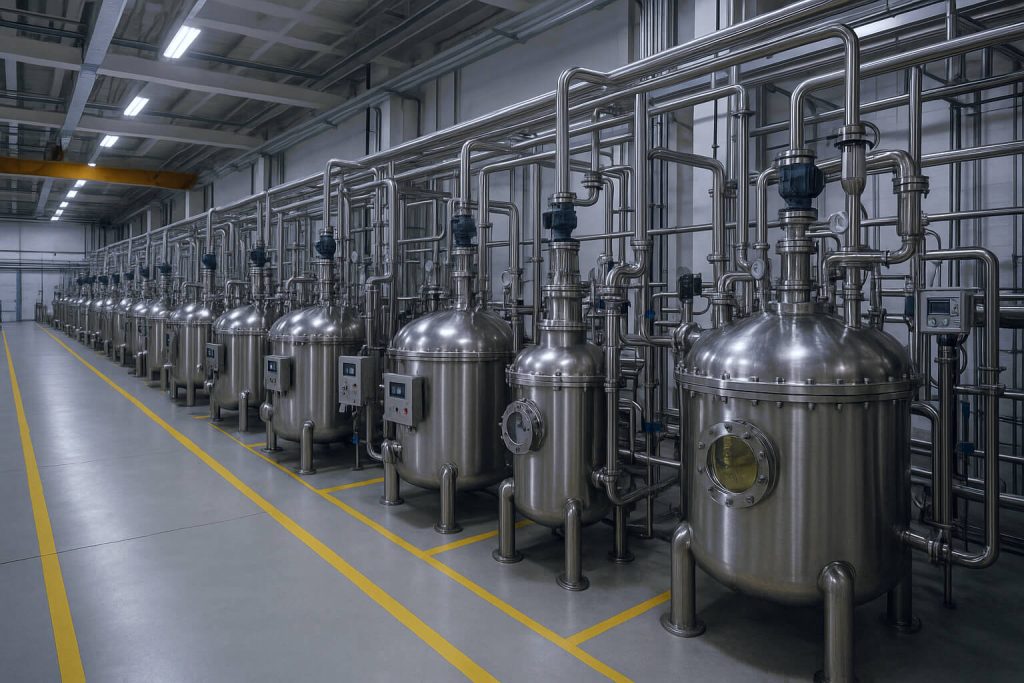
1. What is HPMC and why is it important in various industries?
HPMC, or Hydroxypropyl Methylcellulose, is a versatile polymer derived from cellulose. It finds extensive use across various industries due to its unique properties. This includes its ability to thicken, bind, and retain water. It is a non-ionic, water-soluble ether of cellulose. This makes it suitable for a wide range of applications. وهنا السبب وراء أهمية ذلك... Its chemical structure allows for excellent film-forming capabilities and thermal gelation. This contributes to its broad utility.
In pharmaceuticals, HPMC acts as a binder in tablets, a film-former in coatings, and a sustained-release agent. It ensures controlled drug delivery. In the construction sector, HPMC improves the workability, water retention, and adhesion of cement-based materials. This includes mortars and tile adhesives. The food industry uses HPMC as a thickener, emulsifier, and stabilizer in various products. This enhances texture and shelf life. Its non-toxic and inert nature makes it a preferred choice in these sensitive applications.
| ملكية | وصف | الفائدة الرئيسية |
|---|---|---|
| احتباس الماء | يحتفظ بالماء في التركيبات | Prevents premature drying, improves workability |
| سماكة | يزيد من لزوجة المحاليل | Provides desired consistency, prevents settling |
| ملزم | Adheres particles together | Improves tablet hardness, reduces dust |
| تشكيل الفيلم | Creates a protective layer | Enhances appearance, controls release |
| التجلط الحراري | يشكل هلامًا عند التسخين | Useful in controlled release and food applications |
2. How do you identify a reliable HPMC manufacturer?
Identifying a reliable HPMC manufacturer requires careful evaluation beyond just price. You must assess their commitment to consistent quality and adherence to industry standards. A reputable manufacturer will possess relevant certifications. These include ISO 9001 for quality management and GMP (Good Manufacturing Practices) for pharmaceutical applications. These certifications demonstrate a dedication to rigorous production processes. They also show a focus on product integrity. الآن، ربما تتساءل... how do these certifications translate into tangible benefits for your operations? They ensure that the HPMC you receive is produced under controlled conditions. This minimizes variations and guarantees performance.
Regulatory compliance is paramount, especially for HPMC used in sensitive applications like pharmaceuticals and food. Manufacturers must comply with regional and international regulations. This includes pharmacopoeial standards and food safety guidelines. Supply chain stability is another critical factor. A reliable manufacturer maintains robust supply chains. This ensures timely delivery and minimizes disruptions. Ethical sourcing practices also reflect a manufacturer’s integrity. This builds trust and ensures sustainable partnerships.
| معايير التقييم | وصف | أهمية |
|---|---|---|
| الشهادات | ISO 9001, GMP, Halal, Kosher | Ensures quality and compliance |
| Regulatory Adherence | Pharmacopoeial standards, food safety | Critical for sensitive applications |
| Supply Chain Robustness | Redundancy, logistics, inventory | ضمان إمداد ثابت |
| Ethical Sourcing | Sustainable practices, fair labor | Reflects company values, reduces risk |
| الدعم الفني | Application guidance, troubleshooting | Enhances product development |
3. What quality standards should HPMC suppliers meet?
Meeting stringent quality standards is non-negotiable for HPMC suppliers. You need assurance that the material you receive will perform consistently. International quality certifications, such as ISO 9001, are foundational. For pharmaceutical-grade HPMC, adherence to Good Manufacturing Practices (GMP) is critical. These standards dictate strict control over manufacturing processes. They also cover quality control and quality assurance systems. ماذا يعني هذا بالنسبة لك؟ It means the supplier has a documented system for ensuring product quality. This minimizes risks associated with product variability.
Testing and analytical methods play a vital role in verifying HPMC quality. Suppliers should employ advanced techniques. These include rheology, viscometry, and particle size analysis. These tests confirm the HPMC meets specified parameters for your application. Product consistency across batches is also paramount. Inconsistent batches lead to production issues and product failures. A reliable supplier implements robust batch control measures. This ensures uniformity from one delivery to the next.
| معيار الجودة | وصف | Relevance |
|---|---|---|
| ايزو 9001 | نظام إدارة الجودة | General quality assurance |
| ممارسات التصنيع الجيدة | ممارسات التصنيع الجيدة | Pharmaceutical and food safety |
| USP/EP/JP | Pharmacopoeial Standards | Drug formulation compliance |
| HACCP | Hazard Analysis Critical Control Point | Food safety management |
| REACH/RoHS | Chemical Regulations | Environmental and safety compliance |
4. How does HPMC manufacturing impact product performance?
The manufacturing process of HPMC directly influences its final properties and, consequently, its performance in your products. Different manufacturing techniques yield various HPMC grades. These grades possess distinct characteristics. For example, the degree of substitution and molecular weight are critical parameters. They determine the HPMC’s viscosity, gelation temperature, and solubility. A supplier’s ability to control these parameters is key. It ensures the HPMC meets your specific application needs. هل تريد أن تعرف السر؟ The precision in controlling these variables during synthesis directly correlates with the HPMC’s functional consistency. This impacts your end product’s reliability.
Customization options are often available from leading manufacturers. They can tailor HPMC grades to meet unique industrial requirements. This might involve adjusting the viscosity range or modifying the substitution pattern. Such customization ensures optimal performance in specialized formulations. The impact of molecular weight and substitution degree on functionality is profound. Higher molecular weight generally leads to higher viscosity. Different substitution patterns affect solubility and thermal gelation. Understanding these nuances helps you select the right HPMC for your application. It also helps you troubleshoot performance issues.
| Manufacturing Parameter | Impact on HPMC Property | أهمية التطبيق |
|---|---|---|
| درجة الاستبدال | الذوبانية، التجلط الحراري | Film-forming, binding |
| الوزن الجزيئي | Viscosity, thickening power | Suspension stability, controlled release |
| حجم الجسيمات | Dissolution rate, dispersibility | Ease of processing, homogeneity |
| نقاء | Performance consistency, safety | Critical for pharmaceutical use |
| قيمة الرقم الهيدروجيني | Solution stability, compatibility | توافق التركيبة |
5. What are the key considerations for HPMC supply chain management?
Effective HPMC supply chain management is crucial for maintaining uninterrupted production and controlling costs. You must consider global sourcing strategies to diversify your supply base. This mitigates risks associated with regional disruptions. Relying on a single source can expose your operations to significant vulnerabilities. This includes geopolitical instability or natural disasters. A well-managed supply chain ensures a steady flow of materials. It also helps optimize inventory levels. ولكن هذا هو الشيء... managing a global supply chain involves navigating complex logistics and customs regulations. This requires expertise and robust systems.
Risk management in HPMC procurement involves identifying potential disruptions. It also means developing contingency plans. This includes having alternative suppliers or maintaining safety stock. Inventory management strategies, such as just-in-time (JIT) delivery, can reduce holding costs. However, JIT requires highly reliable suppliers and efficient logistics. Balancing cost savings with supply security is a delicate act. It demands careful planning and strong supplier relationships. Understanding lead times and transportation modes is also vital. This ensures timely delivery and minimizes delays.
| Supply Chain Consideration | وصف | فائدة |
|---|---|---|
| Global Sourcing | Diversifying supplier locations | Reduces regional risk, improves resilience |
| Risk Mitigation | Contingency planning, alternative suppliers | Ensures supply continuity |
| Inventory Optimization | Just-in-time, safety stock | Reduces holding costs, prevents stockouts |
| Logistics Management | Transportation, warehousing, customs | Ensures timely and cost-effective delivery |
| Supplier Relationship | Long-term partnerships, communication | Fosters trust, improves collaboration |
6. How can HPMC contribute to sustainable product development?
HPMC offers significant advantages for sustainable product development. You can leverage its properties to create more environmentally friendly products. The environmental impact of HPMC production is generally lower compared to synthetic polymers. This is because it is derived from a renewable resource: cellulose. Its biodegradability is a key factor. HPMC breaks down naturally in the environment. This reduces long-term waste and pollution. This makes it an attractive option for companies committed to green initiatives. وهذا مهم لأن… consumers and regulators increasingly demand sustainable materials. Using HPMC aligns with these growing environmental concerns.
HPMC plays a crucial role in green building materials. It enhances the performance of eco-friendly construction products. This includes low-VOC paints and sustainable mortars. Its use reduces the need for less sustainable additives. In packaging, HPMC can contribute to the development of biodegradable films and coatings. These alternatives reduce plastic waste. By choosing HPMC, you contribute to a circular economy. This minimizes resource depletion and environmental harm. Its versatility allows for innovation in various sustainable applications.
| Sustainable Aspect | Description | Environmental Benefit |
|—|—|—||
| Renewable Resource | Derived from cellulose (plants) | Reduces reliance on fossil fuels |
| Biodegradability | Breaks down naturally | Minimizes landfill waste, reduces pollution |
| Low Toxicity | Safe for environment and health | Reduces ecological footprint |
| Energy Efficiency | Production process can be optimized | Lower carbon emissions |
| Versatility | Wide range of applications | Enables sustainable alternatives |
7. What technical support should HPMC suppliers offer?
Comprehensive technical support from HPMC suppliers is invaluable. You need more than just a product; you need a partner. A supplier with strong technical expertise can provide crucial application support. This includes guidance on optimal HPMC grades for your specific formulations. They can also assist with dosage recommendations and mixing procedures. This support helps you achieve desired product performance. It also minimizes trial-and-error in your development process. دعني أشرح... effective technical support can significantly reduce your development cycle time. This saves both time and resources.
Troubleshooting assistance is another critical aspect of supplier support. When you encounter formulation challenges or performance issues, a knowledgeable supplier can help diagnose the problem. They can suggest solutions. This might involve adjusting HPMC concentration or exploring different grades. Their research and development (R&D) capabilities are also important. Suppliers actively engaged in R&D are more likely to offer innovative solutions. They can also provide insights into future product developments. This partnership approach ensures you stay competitive. It also helps you optimize your product portfolio.
| Technical Support Aspect | وصف | Value to Buyer |
|---|---|---|
| Application Guidance | Recommendations for specific uses | Optimizes formulation, reduces errors |
| مساعدة في صياغة الدواء | Help with new product development | Accelerates R&D, improves efficiency |
| Troubleshooting | Problem diagnosis and solutions | Resolves issues quickly, minimizes downtime |
| R&D Insights | Information on new products/trends | Fosters innovation, competitive edge |
| Training | Workshops, seminars on HPMC use | Enhances internal expertise |
8. How do you evaluate the cost-effectiveness of HPMC suppliers?
Evaluating the cost-effectiveness of HPMC suppliers goes beyond simply comparing unit prices. You must consider the total cost of ownership. This includes factors like shipping costs, lead times, and potential production efficiencies gained. A lower unit price might seem attractive initially. However, if it comes with unreliable delivery or inconsistent quality, the true cost can be much higher. This leads to production delays and rework. والخلاصة؟ A holistic view of costs ensures you make a truly economical choice. This supports your long-term financial health.
Value-added services also contribute to cost-effectiveness. These services include technical support, customized packaging, or inventory management solutions. These can reduce your operational burden and improve efficiency. Long-term partnerships with suppliers often lead to better pricing and more stable supply. This is due to mutual trust and understanding. The impact of scale and volume on pricing is also significant. Larger orders often qualify for volume discounts. This can reduce the per-unit cost. However, balance this with your storage capacity and demand forecasts. This avoids excess inventory.
| عامل التكلفة | وصف | Impact on Total Cost |
|---|---|---|
| Unit Price | Per kilogram or per ton cost | Direct material cost |
| تكاليف الشحن | Freight, insurance, customs | Adds to landed cost |
| مهلة | Time from order to delivery | Affects inventory holding costs, production scheduling |
| اتساق الجودة | التوحيد من دفعة إلى دفعة | Reduces rework, waste, and production delays |
| الدعم الفني | Assistance with formulation, troubleshooting | Reduces R&D costs, improves efficiency |
| شروط الدفع | Credit period, discounts | Affects cash flow |
9. What are the future trends in HPMC production and application?
The HPMC market is dynamic, with ongoing innovations shaping its future. You should stay informed about these trends to maintain a competitive edge. Innovations in HPMC synthesis and modification are continuously emerging. This includes developing new grades with enhanced properties. Examples are improved solubility, higher thermal stability, or specific functionalities for novel applications. These advancements open new possibilities for product development. They also improve existing formulations. وهنا الصفقة… staying abreast of these innovations allows you to integrate cutting-edge materials into your products. This keeps you ahead of the curve.
Emerging applications and market growth areas are also significant. HPMC is finding new uses in areas like 3D printing, advanced drug delivery systems, and sustainable packaging solutions. The demand for bio-based and environmentally friendly materials is driving much of this growth. Regulatory changes also influence the industry. Stricter environmental regulations or new safety standards can impact production processes and product formulations. Adapting to these changes is crucial for compliance and market access. Understanding these trends helps you anticipate market shifts. It also allows you to strategically plan your material sourcing.
| الاتجاه المستقبلي | وصف | التأثير على سوق HPMC |
|---|---|---|
| وظائف مُحسّنة | New grades with improved properties | Expands application possibilities |
| الإنتاج المستدام | Eco-friendly manufacturing processes | Meets growing demand for green products |
| Novel Applications | الطباعة ثلاثية الأبعاد وتوصيل الأدوية المتقدم | Creates new market segments |
| Regulatory Evolution | Stricter environmental/safety rules | Drives innovation, ensures compliance |
| التحول الرقمي | Supply chain optimization, smart manufacturing | Improves efficiency, transparency |
10. How can you ensure a consistent supply of high-quality HPMC?
Ensuring a consistent supply of high-quality HPMC is vital for your operational stability. You can achieve this through strategic supplier relationships. Building strong, long-term partnerships with your HPMC suppliers is paramount. This fosters trust and open communication. It allows for better planning and responsiveness to market changes. Regular performance reviews and feedback sessions help maintain quality standards. They also ensure mutual understanding of expectations. الآن، ربما تتساءل... how do you build these strong relationships? It involves clear communication, fair dealings, and a commitment to shared success.
Diversification of supply sources is another key strategy. Relying on multiple qualified suppliers reduces your risk of supply disruptions. If one supplier faces issues, you have alternatives. This ensures continuity of supply. Proactive quality control measures are also essential. This includes implementing incoming material inspections. It also involves conducting regular audits of your suppliers’ facilities. These measures verify that the HPMC consistently meets your specifications. They also help identify potential issues before they impact your production. A robust quality assurance program safeguards your product integrity.
| الاستراتيجية | وصف | فائدة |
|---|---|---|
| Strong Partnerships | Collaborative relationships with suppliers | Improved communication, stable supply |
| Diversify Sources | Multiple qualified suppliers | Reduces risk of disruption, increases resilience |
| Proactive QC | Incoming inspections, supplier audits | Ensures consistent quality, prevents issues |
| التواصل الواضح | Regular updates, feedback loops | Aligns expectations, resolves problems |
| Contract Management | Well-defined agreements, performance metrics | Secures terms, ensures accountability |
خاتمة
Selecting the right HPMC supplier is a strategic decision that profoundly impacts your product quality, operational efficiency, and market competitiveness. We have explored the critical factors, from understanding HPMC’s diverse applications and manufacturing impacts to navigating supply chain complexities and embracing sustainability. Prioritizing quality standards, robust technical support, and a holistic view of cost-effectiveness ensures you secure a consistent supply of high-performing HPMC. This comprehensive approach minimizes risks and optimizes your production processes. To gain a competitive edge and ensure your HPMC sourcing aligns with the highest industry standards, partner with Morton. We offer unparalleled expertise and a commitment to quality that drives your success. Contact Morton today to discuss your specific HPMC needs and discover how our solutions can elevate your products.
التعليمات
Q1: What is the primary function of HPMC in pharmaceutical formulations?
HPMC serves multiple functions in pharmaceuticals. It is a binder in tablets, a film-former for coatings, and a controlled-release agent. Its versatility allows for precise drug delivery and improved product stability.
Q2: How does HPMC contribute to the stability of construction materials?
In construction, HPMC improves water retention in cement-based materials. This prevents premature drying and enhances workability. It also acts as a thickener and binder, improving adhesion and preventing sagging.
س3: هل يمكن استخدام HPMC في المنتجات الغذائية العضوية؟
Yes, HPMC can be used in organic food products. It is derived from cellulose, a natural polymer. Many HPMC grades are certified for use in organic food production, serving as thickeners, emulsifiers, and stabilizers.
Q4: What are the environmental benefits of using HPMC?
HPMC is biodegradable and derived from a renewable resource (cellulose). Its use reduces reliance on synthetic polymers and contributes to more sustainable product formulations. It also has low toxicity, minimizing its environmental impact.
Q5: How do different HPMC grades affect their application?
Different HPMC grades have varying properties, such as viscosity and substitution degree. These properties determine their suitability for specific applications. For example, high-viscosity grades are used for thickening, while low-viscosity grades are ideal for film-forming.

